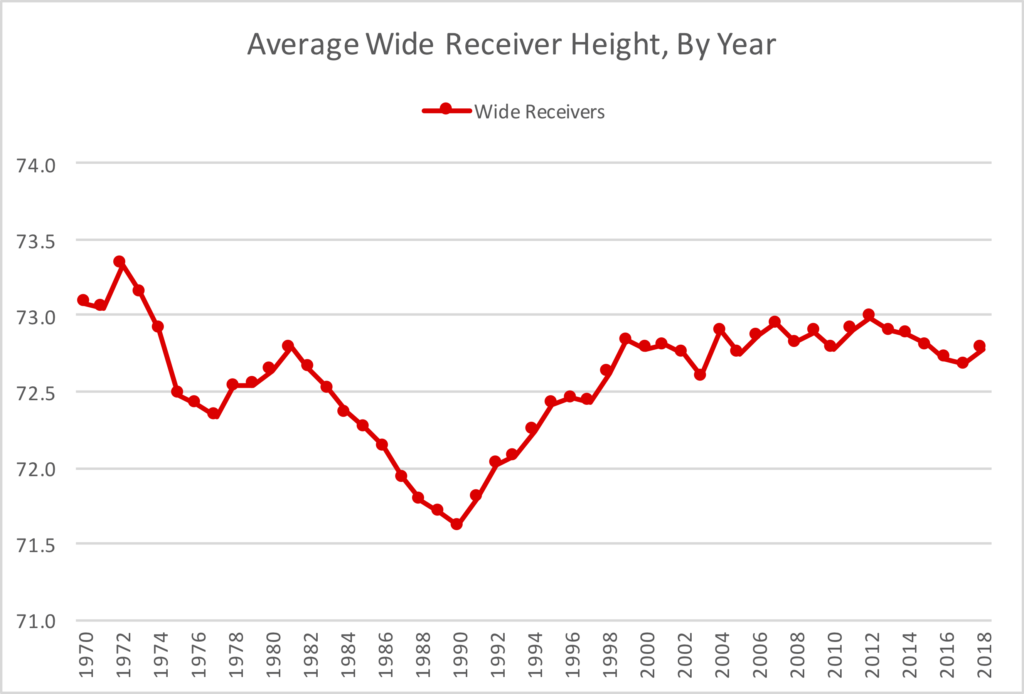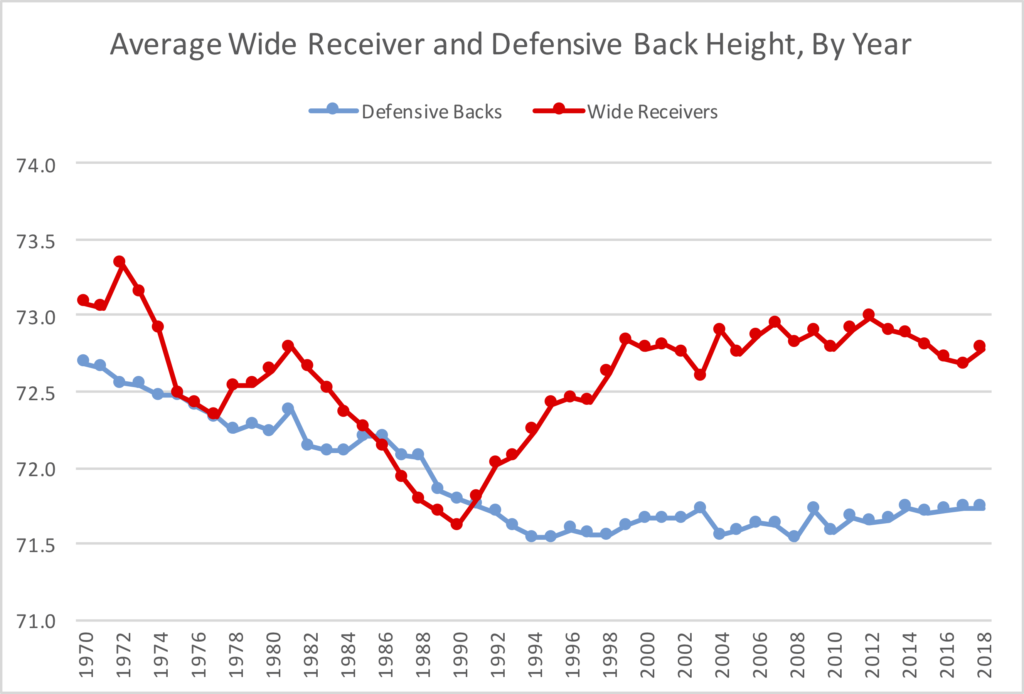In 1973, the top five fantasy wide receivers were 6’8 Harold Carmichael, 6’3 Charley Taylor, a pair of 6’1 guys in John Gilliamand Isaac Curtis, and 5’10 Harold Jackson.
In 1988, the top five fantasy wide receivers were 6’2 Jerry Rice, a pair of 5’11 players in Henry Ellard and Ricky Sanders, and a pair of 5’9 targets in Mark Clayton and Drew Hill.
Ten years later, in 1998, the top five fantasy wide receivers were a pair of 6’4 wideouts in Randy Moss and Keyshawn Johnson, a 6’3 Terrell Owens, a 6’2 Eric Moulds, and a 6’1 Antonio Freeman. 6’3 Cris Carter was the sixth-ranked fantasy wideout.
Those years are representative of the broader trend in the NFL: the “average” wide receiver was a bit over six feet tall throughout the 1970s and through 1985; during the ’80s, receivers kept getting shorter, and the “average” receiver was just 71.6 inches tall — also known as a hair under six feet — in 1990. During the ’90s, however, the trend reversed, and by 1998, the “average” receiver once again looked like he did (from a height perspective, at least) prior to the mid-’80s. The “average” wide receiver now is consistently just shy of 6’1 tall, league-wide.
What do I mean by average? I took the height of every wide receiver in the NFL each year, and then took a weighted average of those players based on the number of receiving yards they had. This means a 6’3 receiver with 1200 yards counts three times as much as a 5’10 receiver with 400 yards when determining the weight of the “average” wide receiver in the NFL in a given season. Take a look:
We can also do the same thing for defensive backs, using Approximate Value (PFR’s go-to statistic) rather than receiving yards to give more weight to the best players. Before I show you that graph, let me give you the inspiration for today’s post:
🚨ATTENTION ALL UNDERCLASSMAN COLLEGE WIDE RECEIVERS: If you are over 6-feet and not elite player you should seriously consider waking into your head coach’s office to request a move to CB. The NFL views WR as a dime-a-dozen position. https://t.co/udz1wkQkd7
— Jim Nagy (@JimNagy_SB) May 11, 2019
Now, is it true that taller players are better off trying to be a cornerback than wide receiver? When we look at the average height for defensive backs throughout post-merger history, and compare them to wide receivers, we see an interesting story. Just like with wide receivers, defensive backs got shorter during the ’80s, likely as teams began using more slot receivers and nickel cornerbacks. But the rebound simply never happened at defensive back.
I have some thoughts on why defensive backs didn’t get taller, but what do you think?


